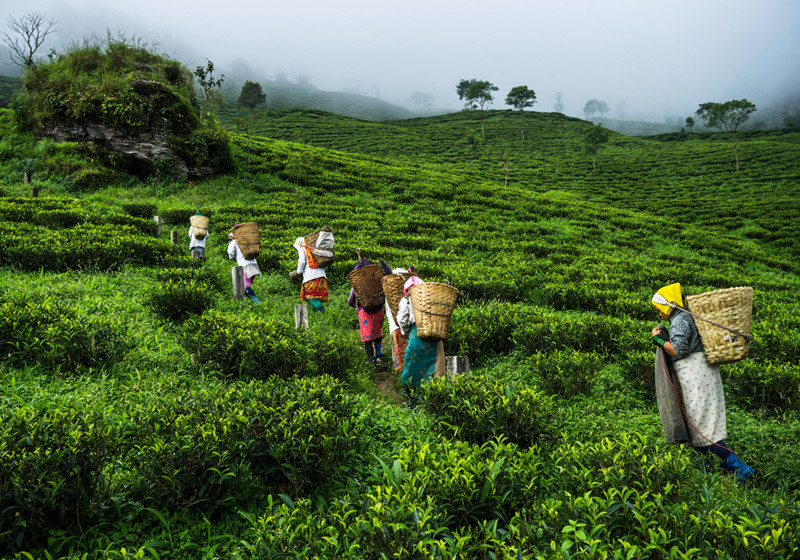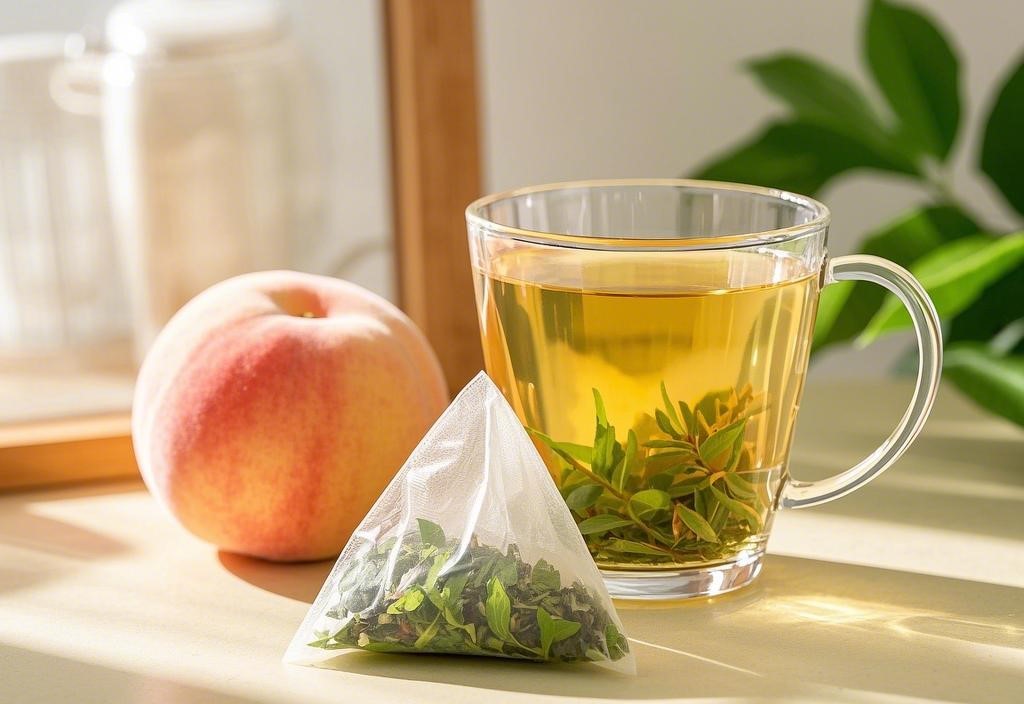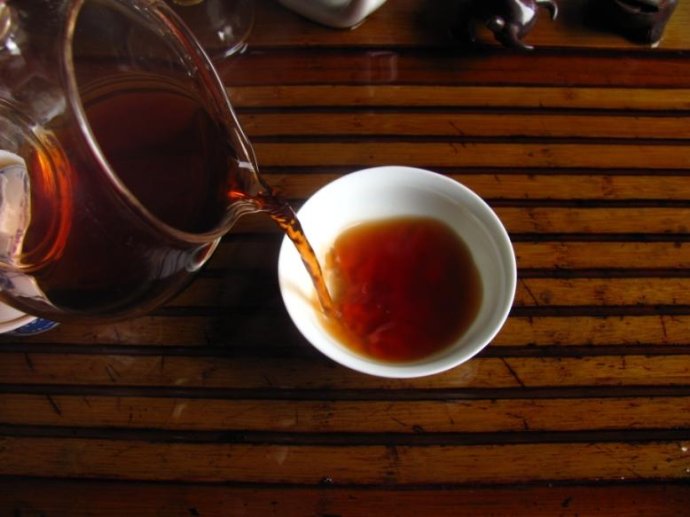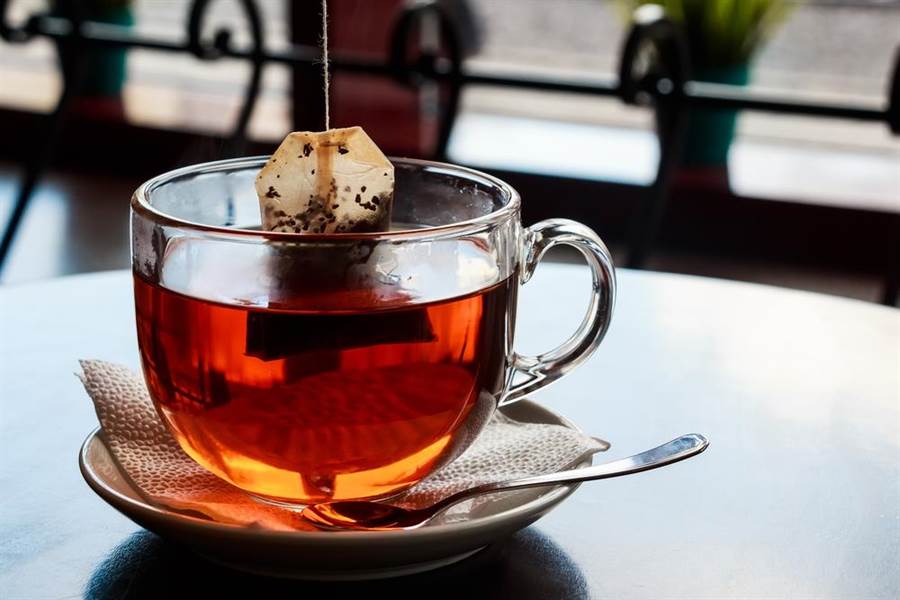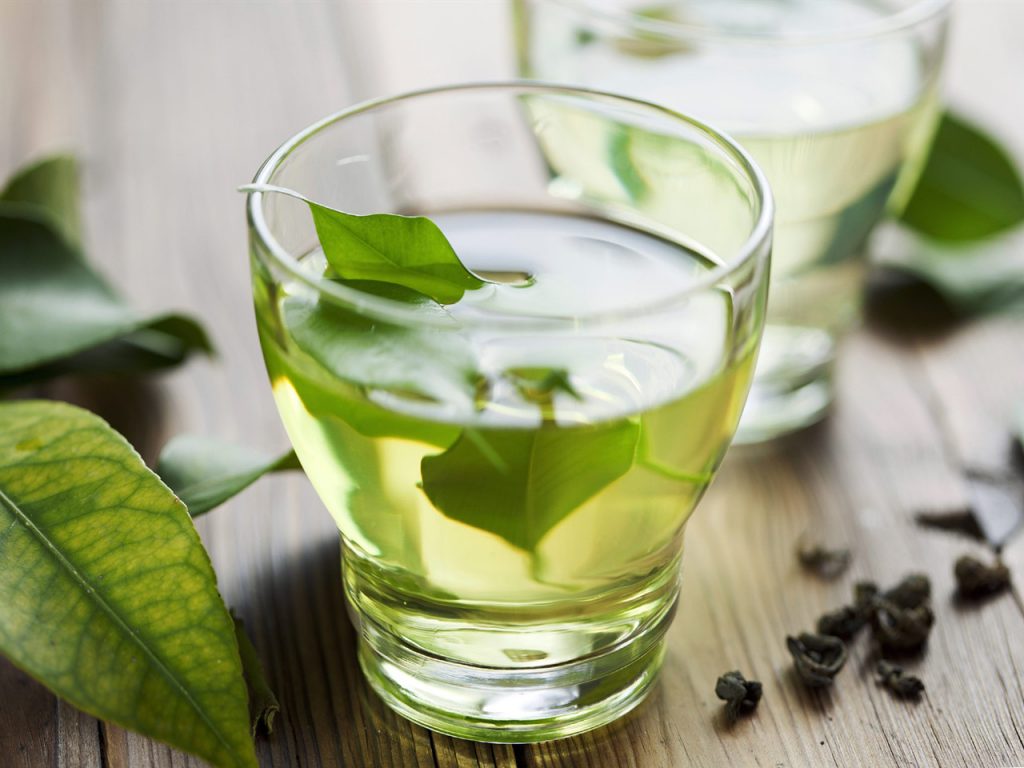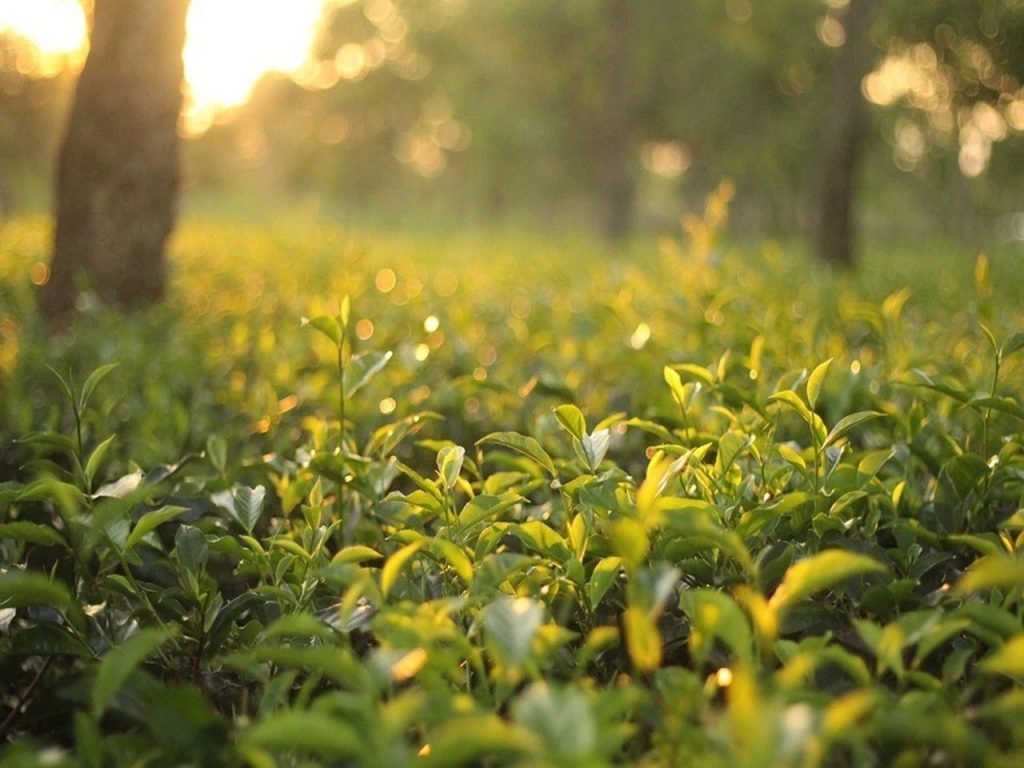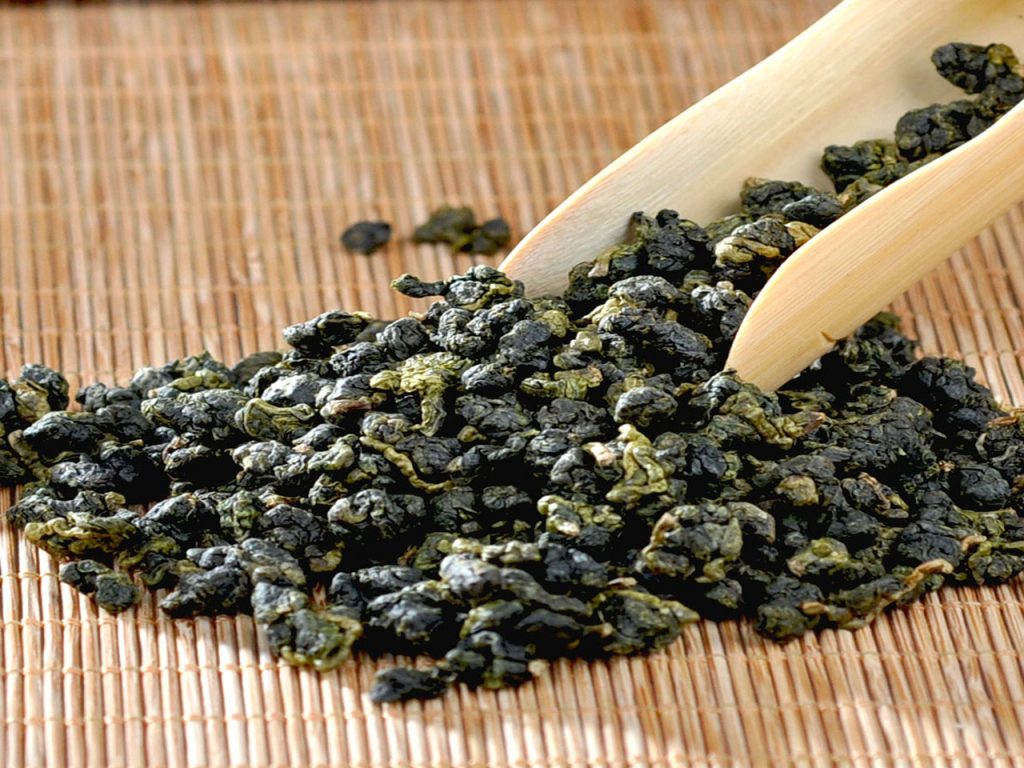Taiwan Roasted Dong Ding Tung Ting Oolong Tea 冻顶乌龙茶
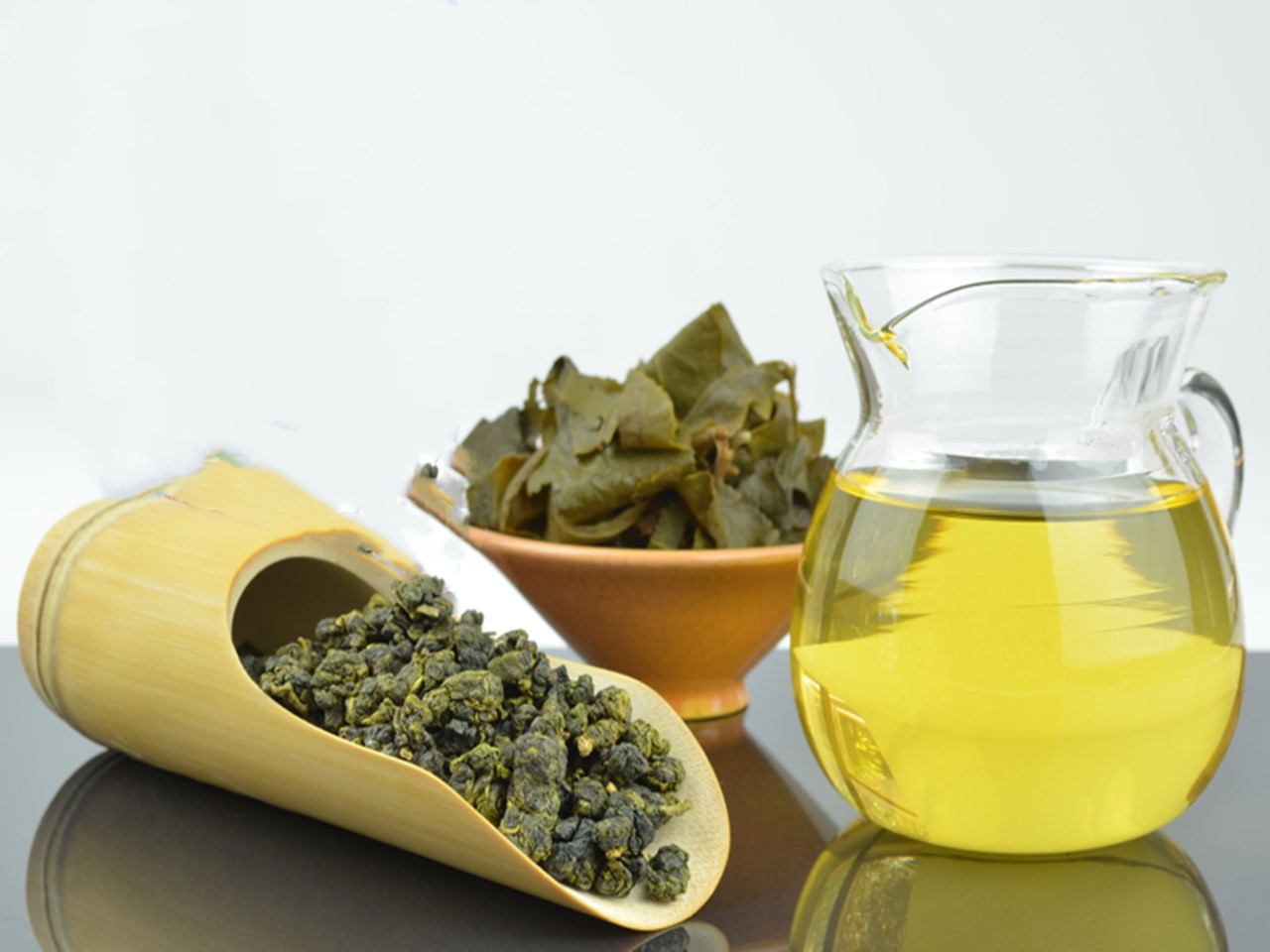
Dong Ding Tea also spelled Tung Ting, is a classic green oolong tea from Taiwan. It is a delectable medium-roasted oolong with the aroma of the lightly oxidized. When you brew it, you will be fascinated by aroma!
Why are we called it ‘Dong Ding’ >>>
Tea is from the Lugu region of Nantou County in central Taiwan (Dong Ding Mountain, Lugu Township, Nantou County, Taiwan). Tea grows on the height 800-2000 m. The name dong ding means “frozen peak,” but that is not to say that you can find any ice on this relatively short mountain, with most tea grown at altitudes of 600 to 1800 meters (“high mountain tea” is means tea grown above 1000 meters).
The name dong ding originated in the fact that because the mountain is quite steep, people had to walk on their tiptoes to climb it.
They referred to this in the Taiwanese Hokkien/Minnan (台語/閩南話) language as “grasping the peak”, which happens to sound like “frozen peak” in Mandarin. The area is ideal for the growing of tea, with a temperate monsoon climate, strong morning sunshine, and persistent afternoon fog. The area is also quite windy, causing the soil to be less rich in nutrition. As a result, the tea leaves supposedly accumulate and retain more nutrients, producing a richer flavor.
Dong Ding Oolong Tea Balls>>>
Over time, tea farmer began to manufacture Dong Ding Tea in other areas of Taiwan. Producers called it Dong Ding because they used the same post-processing methods as those at Dong Ding Mountain. Dong Ding is typically picked, withered, tossed in bamboo baskets to kick start oxidation, tumble heated, then rolled into little balls characteristic of many Taiwanese oolongs.
Each ball with a bit of stem and 2-3 leaves. The plant is short with dense bunches of thick leaves, soft and elastic to the touch and deep, glossy green in color. It has a slight yellow hue to it, best described as olive green. The final step that gives Dong Ding its unique flavor. Because the slow roasting of the tea leaves over charcoal, setting the oxidation level at 25 to 35%. Dong Ding is hand-picked, sundried, 30%-40% oxidized, and 60% roasted.
Taste Autumn Fruity Aroma Tea >>>
Tea with a robust flavor and notes of roasted barley, caramel, and baked plum. One of the special characteristics of roasted Dong Ding is a lingering sweetness, known as “hui gan”.
This tea has a well-balanced flavor and a velvety mouthfeel that transforms into a sweet finish with lingering hints of honeydew, altogether a full-bodied and delicious, refreshing tea, great served hot or cold.
Protects Itself From Pests>>>
This oolong tea has a moderate level of caffeine. This tea traditionally contains a bud and 2 to 3 leaves.
This amount of buds to leaves means it will contain some caffeine, but less so than teams that are solely made up of the bud or the bud and first leaf.
The tea bush protects itself from pests and insects by storing caffeine in the tips of the plant, the bud, and young leaves. This is why teas with buds and young leaflets have more caffeine than teas with no buds and larger, older leaves.
Brew tea Gong-Fu >>>
You can use water at about 185°-195°F or 85°-90°C to steeping.
Depending on individual gustatory preferences you can you can vary brewing time from 35s to 5 minutes. You can also use Chinese traditional way of brewing – spilling, using teapot and brew for 3-5 second each time.

